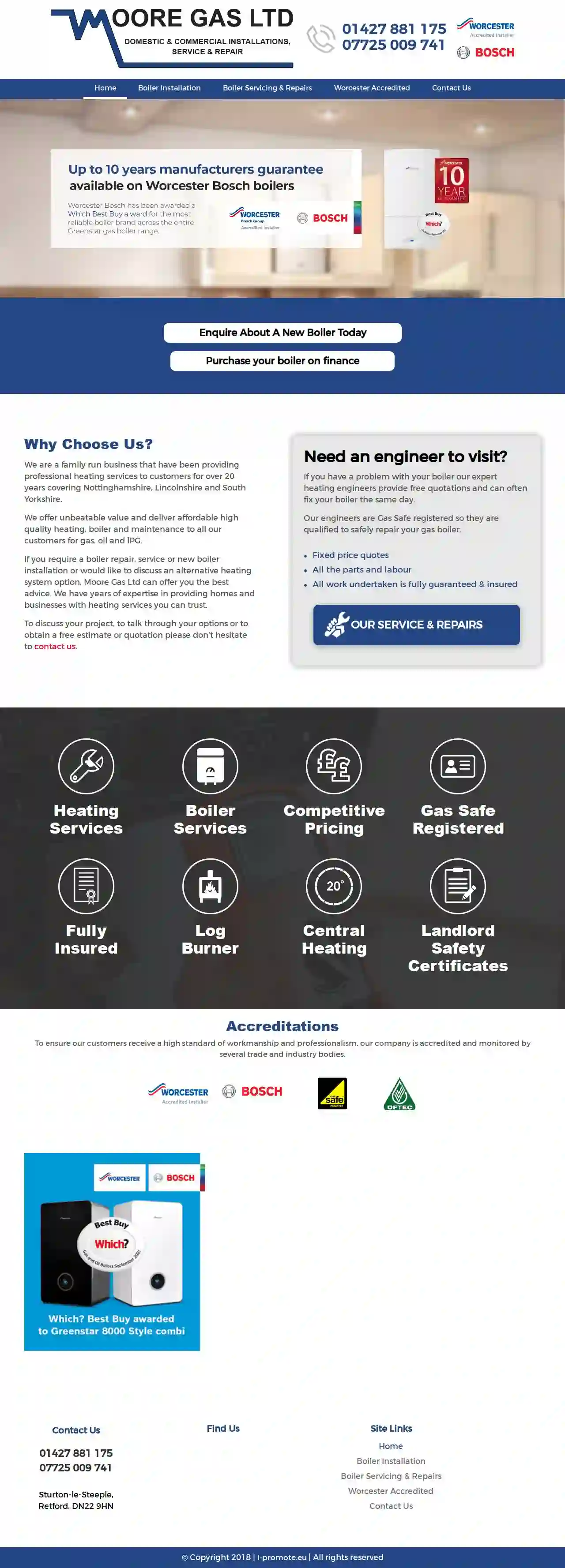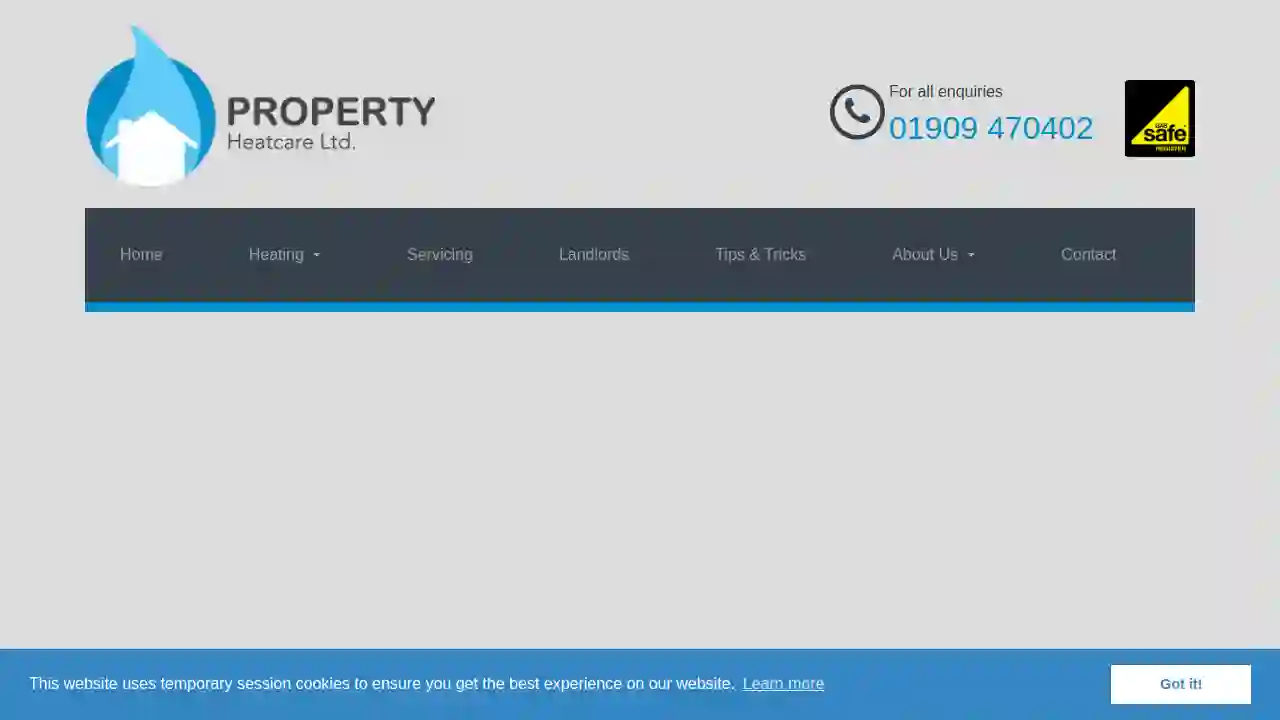Boiler Installation Edwalton
Top 10 New Boiler in Edwalton
Receive multiple New Boiler quotes for your project today! Compare profiles, reviews, accreditations, portfolio, etc... and choose the best offer.

Trusted Energy Solutions
3.912 reviewsWorksop, GBTrusted Energy Solutions are quality focused renewable heating specialists serving the East Midlands from our offices near Newark. We are certified experts in renewable heating, heat pumps, solar PV and ventilation systems; all delivering top-tier quality and reliability. Over 13 years in business, with hundreds of installs across the East Midlands. Our focus is on helping clients make informed choices on renewables and related technology. We start with a no obligation call and free survey to understand your needs and discuss your options. Our detailed calculations help propose the right system for your property. We present solutions, pricing, savings and subsidies to aid your decision. If you proceed, senior engineers assess the site before our own accredited technicians install the system. Our aim is your satisfaction throughout the transition to renewable technologies.
- Services
- Why Us?
- Accreditations
- Gallery
Get Quote
Abbey Heating Limited
4.114 reviewsUnit 3, Highgrounds Way, Rhodesia, Worksop, S80 3AF, GBAbbey Heating Limited is a professionally run company with over 20 years of hands-on experience in servicing, maintaining and installing all kinds of oil and gas fired boilers along with other heating appliances. We are OFTEC and Gas Safe Registered. Our qualified engineers undertake every job with the same passion & commitment it deserves. We're recognised by Worcester Bosch for our high quality workmanship. Companies selected on to the scheme are entrusted by Worcester Bosch to carry out new boiler installations to the very highest level. We provide a full range of top quality plumbing services from Small Leaks to Wet Rooms & Bathroom Refurbishments Emergency Call Outs & Fast Response. Telephone 01909 532347. We are Gas Safe & OFTEC Registered. NO JOB TOO BIG OR TOO SMALL.
- Services
- Why Us?
- Accreditations
- Gallery
Get Quote
Green Vision Solutions Ltd
510 reviewsUnit 12b Dukeries Way, Dukeries Industrial Estate, Worksop, S81 7DW, GBWe are an independently run Renewables, Electrical and Heating Contractor. Green Vision has blossomed into a company capable of delivering small to medium scale, complete mechanical and electrical solutions to offer a complete builders M&E package. Based in Nottinghamshire, Green Vision are able to offer nationwide comprehensive mechanical & electrical installations from development and design right through to the handover stage. Green Vision has developed as a successful business by investing in our staff and using highly trained engineers and site operatives all fully qualified in their respective fields. With a wealth of experience in all aspects of mechanical services, we specialise in legislation and compliance with all recognised industry standards.
- Services
- Why Us?
- Testimonials
- Gallery
Get Quote
Moore Gas Ltd
Sturton-le-Steeple, Retford, DN22 9HN, GBMoore Gas Ltd is a family run business that has been providing professional heating services to customers for over 20 years, covering Nottinghamshire, Lincolnshire and South Yorkshire. We offer unbeatable value and deliver affordable high quality heating, boiler and maintenance to all our customers for gas, oil and LPG. Our experienced and helpful staff are always happy to assist you, and we are a Worcester Accredited Installer, ensuring our customers receive a high standard of workmanship and professionalism.
- Services
- Why Us?
- Accreditations
- Gallery
Get Quote
UK Heating Solutions Ltd
52 reviewsUnit 5, Claylands Avenue, Dukeries Industrial Estate, Worksop, S81 7DJ, GBWright Renewable Heating is a trusted provider of renewable energy solutions, offering a range of eco-friendly heating systems, including Air Source Heat Pumps, Ground Source Heat Pumps, Solar PV, Solar Thermal, and EV Charging. Our experienced team designs, installs, commissions, and maintains these systems to ensure efficient and safe heating for homes and businesses. With a commitment to quality, reliability, and flexibility, we aim to provide affordable and efficient solutions to reduce carbon footprint, increase property value, and future-proof our built environment. As approved installers of leading brands such as Vaillant, Viessmann, Stiebel-Eltron, Mitsubishi, and Samsung, we pride ourselves on our expertise and dedication to customer satisfaction.
- Services
- Why Us?
- Accreditations
- Gallery
Get Quote
Force Contracting Services Ltd
53 reviewsUnit 1, High Grounds Court, Rhodesia, Worksop, S80 3FN, GBForce Contracting Services Ltd. is a well-established, independent service provider founded in 2007. We specialize in a wide range of services, including specialist civil engineering, high security fencing, hostile vehicle mitigation, integrated systems, specialist rail construction, lineside civils, and bridge building. Our expertise extends across diverse environments, and we are committed to delivering high-quality services to clients in sectors such as rail, nuclear, and residential. We pride ourselves on our adaptability, transferable knowledge, and experience, making us a reliable partner for projects in various fields. Force Contracting Services Ltd. has consistently grown and diversified its offerings since its inception, always striving to meet the evolving needs of our clients.
- Services
- Why Us?
- Accreditations
- Gallery
Get Quote
Wright Renewable Heating Ltd
4.47 reviewsUnit 5, Claylands Avenue, Dukeries Industrial Estate, Worksop, S81 7DJ, GBWright Renewable Heating is part of the Wright Group of Companies, based in Worksop, Nottinghamshire. Our experienced team designs, installs, commissions and maintains Air and Ground Source Heat Pumps, Thermal and PV solar panel systems and Electric Vehicle charging points to existing housing stock, new build homes and commercial premises. Wright Renewable Heating is committed to providing affordable, quality and efficient renewable energy and heating solutions to the domestic and commercial market and it is our intention to build our customer base through recommendation, strategic alliances and targeted advertising to become a supplier of choice.
- Services
- Why Us?
- Accreditations
- Gallery
Get Quote
Wilco Motosave
4.3195 reviewsWorksop, 41-57 Westgate, S80 1LW, GBFor all your motoring needs, Wilco Motosave offers a huge range of car parts, accessories, and auto services. With a wide range of services including tyres, exhausts, catalytic converters, wheel alignment, diagnostic services, car, van, camper, and motorcycle batteries, servicing and MOTs, brakes, suspension, air conditioning re-gas, fitting services, number plates, sanitising misting service, and paint mixing. Visit your local branch of Wilco Motosave, one of the North's leading independent family-owned motorists' fitting centres and accessory stores.
- Services
- Why Us?
- Gallery
Get Quote
Property Heatcare Ltd
2.54 reviewsWorksop, PO Box 260, S80 3WY, GBProperty Heatcare is a family-run business dedicated to providing reliable, friendly, and affordable service to its clients. All their engineers are Gas Safe registered, supported by a team of friendly office staff available 365 days a year. They guarantee quick and efficient handling of all calls. As a local business, they pride themselves on not using call centres. In addition to their maintenance cover, they offer a range of services including new boiler and heating system installations with 7-12 year warranties, central heating and plumbing repairs, Legionnaires Risk Assessments, landlord safety checks, annual boiler servicing, and free quotations.
- Services
- Why Us?
- Accreditations
- Our Team
- Testimonials
- Gallery
Get Quote
Ecotech Heating & Plumbing
4.935 reviewsAizlewood's Mill Nursery Street, Sheffield, S3 8GG, GBYorkshire's local, reliable and trusted heating and plumbing business. Air conditioning for your home or business from £1,450. Read more. 5 star customer reviews. Meet Ryan and Sandra, the mother and son duo who established ecotech in 2012. The pair work together using Ryan's expert plumbing and heating experience and Sandra's forward-thinking, to provide trusted services that put the customer first. Backed by a team of hardworking industry experts who make up the ecotech family, our local engineers are thorough, friendly and tidy in their work process, delivering a reliable service across Worcester, Worksop and South Yorkshire.
- Services
- Why Us?
- Our Team
- Testimonials
- Gallery
Get Quote
Over 12,692+ HVAC Companies registered
Our HVAC experts operate in Edwalton & beyond!
HVACCompaniesHub has curated and vetted Top HVAC Contractors near Edwalton. Find the most reliable contractor today.
Frequently Asked Questions About Boiler Installation
- Carbon Monoxide Detectors: Install carbon monoxide detectors on every level of your home and test them regularly. . Carbon monoxide (CO) is an odorless, colorless gas that can be produced by a malfunctioning boiler. . Detectors will alert you if there's a CO leak.
- Annual Service: Have your boiler serviced annually. This ensures it's running safely and efficiently.. Regular maintenance ensures optimal performance and protects your investment.
- Check for Leaks: Periodically check for leaks or drips around your boiler and piping. If you find any, contact a qualified heating engineer for repairs..
- Know Your System: Understand your boiler's functions and components. Be sure to read the manual.
- Ventilation: Ensure the room or area where your boiler is installed has proper airflow. Obstructing airflow can lead to dangerous situations.
- Gas Safety (for gas boilers): If you have a gas boiler, be aware of the signs of a gas leak, such as a rotten egg smell.
- Your boiler is more than 15 years old: Older boilers are much less efficient than modern condensing boilers and are more likely to break down, so upgrading to a new, energy-efficient boiler could save you significant amounts on your energy bills over time.
- Your boiler keeps breaking down: If your boiler requires frequent repairs, it might be more cost-effective to replace it in the long run.
- Your energy bills are increasing: An inefficient boiler uses more energy to heat your home, increasing your utility costs.
- Your boiler is making strange noises: Unusual banging, whistling, or gurgling sounds might mean there is a serious issue with your boiler and require professional service.
- Your radiators are not heating up properly: Radiators taking a long time to warm up, or some radiators not heating at all could indicate a problem with your boiler's circulation.
- Low water pressure: Low water pressure might mean your boiler is not functioning optimally. A qualified technician should investigate the problem. .
- Leaks or drips near your boiler: If you notice water pooling around your boiler, turn off your boiler and immediately contact a qualified heating engineer to assess and fix the issue.
- Pilot light goes out frequently: If you have an older boiler and the pilot light goes out frequently, it may need to be repaired or replaced. .
- Yellow flame instead of blue: A yellow flame could indicate the presence of carbon monoxide, which is a dangerous gas. . Seek immediate assistance from a qualified professional.
What safety precautions should I take with a new boiler?
How often should I service my boiler?
Can I install a boiler myself?
What are the signs that I need a new boiler?
What safety precautions should I take with a new boiler?
- Carbon Monoxide Detectors: Place CO detectors in strategic locations and ensure they're functioning correctly. Carbon monoxide (CO) is an odorless, colorless gas that can be produced by a malfunctioning boiler. . Detectors will provide an early warning if there's a CO leak.
- Annual Service: Have your boiler serviced annually. This ensures it's running safely and efficiently.. A professional service can identify potential issues and prevent breakdowns.
- Check for Leaks: Periodically check for leaks or drips around your boiler and piping. If you find any, contact a qualified heating engineer for repairs..
- Know Your System: Understand your boiler's functions and components. Read the manufacturer's instructions for safe operation and maintenance tips. .
- Ventilation: Make sure your boiler has adequate ventilation. Never block any vents or air intakes.
- Gas Safety (for gas boilers): If you detect a gas leak, immediately turn off the gas supply, open windows for ventilation, and evacuate the building. Contact your gas company from a safe location.
How often should I service my boiler?
Can I install a boiler myself?
What are the signs that I need a new boiler?
- Your boiler is more than 15 years old: Consider replacing an older unit with a new, high-efficiency boiler.
- Your boiler keeps breaking down: Frequent service calls might mean it's time for a new boiler.
- Your energy bills are increasing: An inefficient boiler uses more energy to heat your home, increasing your utility costs.
- Your boiler is making strange noises: Unusual banging, whistling, or gurgling sounds could indicate a problem with your boiler and should be investigated by a qualified heating engineer.
- Your radiators are not heating up properly: Radiators not getting hot evenly or consistently could indicate a boiler malfunction, air in the system, or circulation problems.
- Low water pressure: Low water pressure can be a symptom of issues with the boiler. Have a heating engineer inspect the system.
- Leaks or drips near your boiler: If you notice water pooling around your boiler, turn off your boiler and immediately contact a qualified heating engineer to assess and fix the issue.
- Pilot light goes out frequently: If you have an older boiler and the pilot light goes out frequently, it may need to be repaired or replaced. .
- Yellow flame instead of blue: A yellow flame could indicate the presence of carbon monoxide, which is a dangerous gas. . If you see a yellow flame, turn off the boiler and contact a qualified technician immediately..